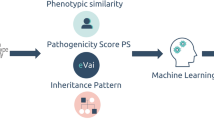Abstract
Several studies in various populations have suggested that non-synonymous BARD1 variants are associated with increased breast cancer risk. Using DHPLC analysis we screened the coding region of BARD1 for variants in 210 probands of breast cancer families including 129 families with no mutations in BRCA1 or BRCA2. These families were ascertained in Australia through the Kathleen Cunningham Foundation Consortium for Research into Familial Breast Cancer (kConFab). Nine coding variants were detected among the kConFab families, including two novel variants (Thr598Ile and Ile692Thr). The frequency of five of these variants were evaluated in 258 non-cancer controls and 401 women with sporadic breast cancer. Three variants (1139del21, G1756C and A2285G) were detected in all three groups at a similar frequency suggesting that these do not represent BRCAX candidates. Two variants (Thr598Ile and Ile692Thr) were not detected in any of the 659 sporadic breast cancer cases and controls and were assessed for segregation with breast cancer in the families of the probands. However, neither variant was identified in any other breast cancer case in either family suggesting that these variants are non-pathogenic polymorphisms. We have found no evidence to support involvement of BARD1 in familial breast cancer risk in the Australian population. In addition, three variants previously reported to be pathogenic in other populations are likely to represent benign polymorphisms and therefore we conclude that BARD1 is unlikely to represent a high-penetrance breast cancer susceptibility gene.

Similar content being viewed by others
References
Easton DF (1999) How many more breast cancer predisposition genes are there? Breast Cancer Res 1:14–17
Rahman N, Seal S, Thompson D et al (2007) PALB2, which encodes a BRCA2-interacting protein, is a breast cancer susceptibility gene. Nat Genet 39:165–167
Seal S, Thompson D, Renwick A et al (2006) Truncating mutations in the Fanconi anemia J gene BRIP1 are low-penetrance breast cancer susceptibility alleles. Nat Genet 38:1239–1241
Easton DF, Pooley KA, Dunning AM et al (2007) Genome-wide association study identifies novel breast cancer susceptibility loci. Nature 447:1087–1093
Wu LC, Wang ZW, Tsan JT et al (1996) Identification of a RING protein that can interact in vivo with the BRCA1 gene product. Nat Genet 14:430–440
Irminger-Finger I, Jefford CE (2006) Is there more to BARD1 than BRCA1? Nat Rev Cancer 6:382–391
Ghimenti C, Sensi E, Presciuttini S et al (2002) Germline mutations of the BRCA1-associated ring domain (BARD1) gene in breast and breast/ovarian families negative for BRCA1 and BRCA2 alterations. Genes Chromosomes Cancer 33:235–242
Karppinen SM, Barkardottir RB, Backenhorn K et al (2006) Nordic collaborative study of the BARD1 Cys557Ser allele in 3956 patients with cancer: enrichment in familial BRCA1/BRCA2 mutation-negative breast cancer but not in other malignancies. J Med Genet 43:856–862
Stacey SN, Sulem P, Johannsson OT et al (2006) The BARD1 Cys557Ser variant and breast cancer risk in Iceland. PLoS Med 3:e217
Huo X, Hu Z, Zhai X et al (2007) Common non-synonymous polymorphisms in the BRCA1 Associated RING Domain (BARD1) gene are associated with breast cancer susceptibility: a case-control analysis. Breast Cancer Res Treat 102:329–337
Jakubowska A, Cybulski C, Szymanska A et al (2007) BARD1 and breast cancer in Poland. Breast Cancer Res Treat, doi:10.1007/s10549-007-9537-4
Vahteristo P, Syrjakoski K, Heikkinen T et al (2006) BARD1 variants Cys557Ser and Val507Met in breast cancer predisposition. Eur J Hum Genet 14:167–172
Ishitobi M, Miyoshi Y, Hasegawa S et al (2003) Mutational analysis of BARD1 in familial breast cancer patients in Japan. Cancer Lett 200:1–7
Karppinen SM, Heikkinen K, Rapakko K et al (2004) Mutation screening of the BARD1 gene: evidence for involvement of the Cys557Ser allele in hereditary susceptibility to breast cancer. J Med Genet 41:e114
Campbell IG, Choong D, Chenevix-Trench G (2004) No germline mutations in the histone acetyltransferase gene EP300 in BRCA1 and BRCA2 negative families with breast cancer and gastric, pancreatic, or colorectal cancer. Breast Cancer Res 6:R366–R371
Sauer MK, Andrulis IL (2005) Identification and characterization of missense alterations in the BRCA1 associated RING domain (BARD1) gene in breast and ovarian cancer. J Med Genet 42:633–638
Thai TH, Du F, Tsan JT et al (1998) Mutations in the BRCA1-associated RING domain (BARD1) gene in primary breast, ovarian and uterine cancers. Hum Mol Genet 7:195–202
Acknowledgements
The authors would like to thank Heather Thorne, Danni Surace and Lynda Williams for preparing DNA, the kConFab research nurses and staff of the Familial Cancer Clinics for data collection, kConFab Central Registry staff for supplying data, and the families for their participation. kConFab is supported by the NHMRC Australia, the National Breast Cancer Foundation of Australia and the Cancer Councils of New South Wales, Queensland, South Australia, Victoria and Western Australia. This work was supported by the Victorian Breast Cancer Research Consortium.
Author information
Authors and Affiliations
Corresponding author
Electronic supplementary material
Below is the link to the electronic supplementary material.
Rights and permissions
About this article
Cite this article
Gorringe, K.L., Choong, D.Y.H., Visvader, J.E. et al. BARD1 variants are not associated with breast cancer risk in Australian familial breast cancer. Breast Cancer Res Treat 111, 505–509 (2008). https://doi.org/10.1007/s10549-007-9799-x
Received:
Accepted:
Published:
Issue Date:
DOI: https://doi.org/10.1007/s10549-007-9799-x




